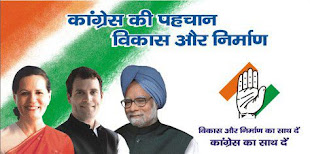Kalpana Palkhiwala
The Internationally agreed regime for climate change is laid down in the United Nations Framework Convention on Climate Change, 1992. Under the Convention, all industrialized countries have binding commitments to reduce their emissions. The Parties to UNFCCC signed the Kyoto Protocol in 1997. The Protocol lays downs binding quantified emission reduction targets for all the 37 industrialised countries that are listed in Annex-I of the Convention for the first commitment period 2008-2012, although US, the World’s biggest emitter of greenhouse gases, did not ratify the Kyoto Protocol.
As per the principle of ‘common but differentiated responsibilities and respective capabilities’, developing countries including India have no obligation to reduce the green house gas emissions. The Convention recognises that the economic and social development and poverty eradication are the first and overriding priorities of the developing countries parties, and that, in course of meeting the developmental needs the emissions of developing countries are bound to rise. Any mitigation action by the developing countries will be consistent with their national priorities. Further, the Convention also recognises the extent to which developing countries parties will effectively implement their commitments i.e. taking actions to mitigate emissions under the convention will depend on the effective implementation by developed countries parties of their commitments relating to provision of financial resources and the transfer of technology.
Bali Action Plan
In December 2007, Parties adopted the Bali Action Plan to enhance the implementation of the Convention. Negotiations are currently underway to determine the quantified emission reduction targets of the Parties to Kyoto protocol for the second commitment period beginning from 2013 and also define the targets of emission reduction for US, comparable with other Kyoto Parties, in pursuance of Bali Action Plan.
Recent International Negotiations
In the recent international negotiations conducted under the UNFCCC, the industrialized countries have called developing countries to contribute to the global effort to address climate change. Specifically, it has been suggested that the developed countries should follow a low carbon development path and deviate in terms of GHG emission from business as usual scenario. It has been suggested that the developing countries should place their domestic mitigation actions at the same level of international review as the mitigation commitments of developed countries. Implicit in the arguments of the developed countries is the suggestion that the international support for adaptation to and mitigation of climate change in developing countries will depends on willingness of developing countries to subject their national action plans to review and progress in terms of low carbon development.
However, India’s approach to these negotiations is fully anchored in the UNFCCC and the Kyoto Protocol. India has argued in the international negotiating fora that the developed country parties must take actions in accordance with the principle of equity and ‘common but differentiated responsibilities and respective capabilities’ in order to achieve the objectives of the convention. Such actions of the developed countries should include deep and ambitious targets for emission reduction in the second commitment period (post 2012) of the Kyoto protocol.
India’s approach to Climate Change India is conscious of the local impacts of climate change within the country. Embedded in the UNFCCC and the Bali Action Plan, India is fully alive to its global responsibilities as well. Although India’s total CO2 emissions are about 4 % of total global CO2 emissions the Prime Minster, Dr. Manmohan Singh has already stated that India will never allow its per capita emissions to exceed that of the developing countries, even with 8-9 % GDP growth every year for the next decade or two, India’s per capita emissions, are likely to be well below developed country averages. India’s energy intensity of production has been falling with improvements in energy efficiency, autonomous technological changes and economical use of energy. India’s climate modelling studies show that its per capita emissions will be around 2-2.5 tonnes of cairn dioxide equivalent by 2020 and around 3-3.5 tonnes of carbon dioxide equivalent by 2030, as compared to around 1-1.2 tonnes presently .
India has stated that further actions of the developing countries will depend on the support in terms of finance and technology provided by the developing countries While India is willing to accept Monitoring, Reporting and Verification (MRV) as per agreed procedures for these actions that are supported by the international community in terms of finance and technology through agreed channels, its voluntary actions financed from its own domestic resources cannot be subjected to international review. While India has taken a number of step, on its own, to adapt to climate change and mitigate its emissions in the interest of ties, energy security and sustainable development, India will take further voluntary and nationally appropriate actions for addressing climate change strictly in accordance with the priorities and objectives laid down under the National Action Plan for Climate Change.
India is engaged in the international negotiations on climate change as a responsible member of the international community. In the recent negotiations in multilateral and bilateral fora, India has articulated its position along the above lines. India has also expressed its intention to do its best to contribute to a positive outcome at Copenhagen as per the principles and provisions of the Convention, Kyoto Protocol and the Bali Action Plan.


























0 Comments